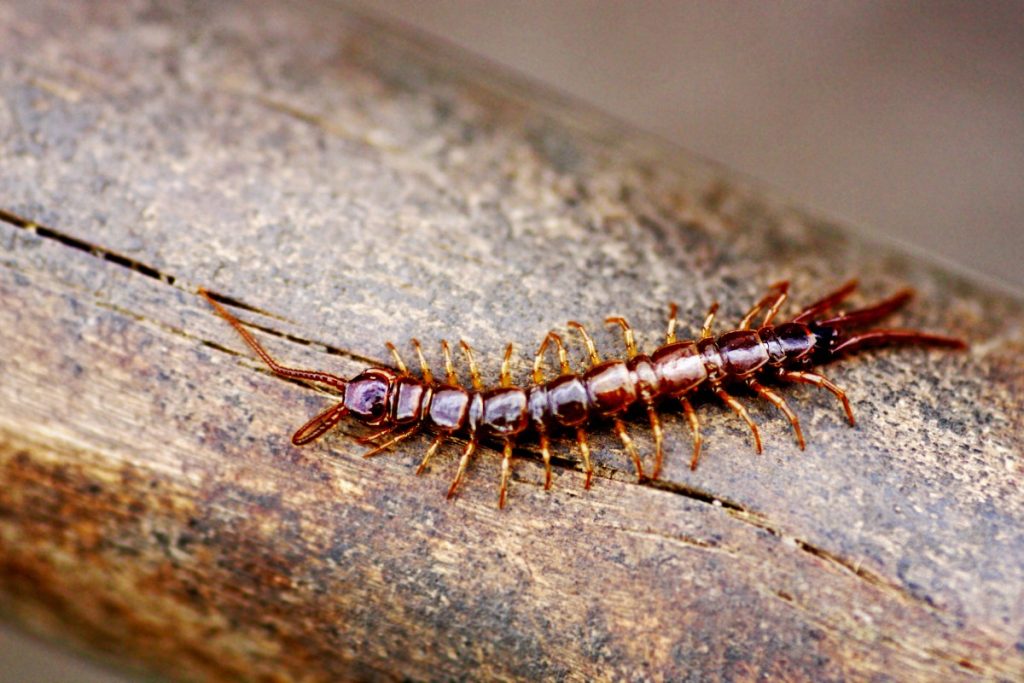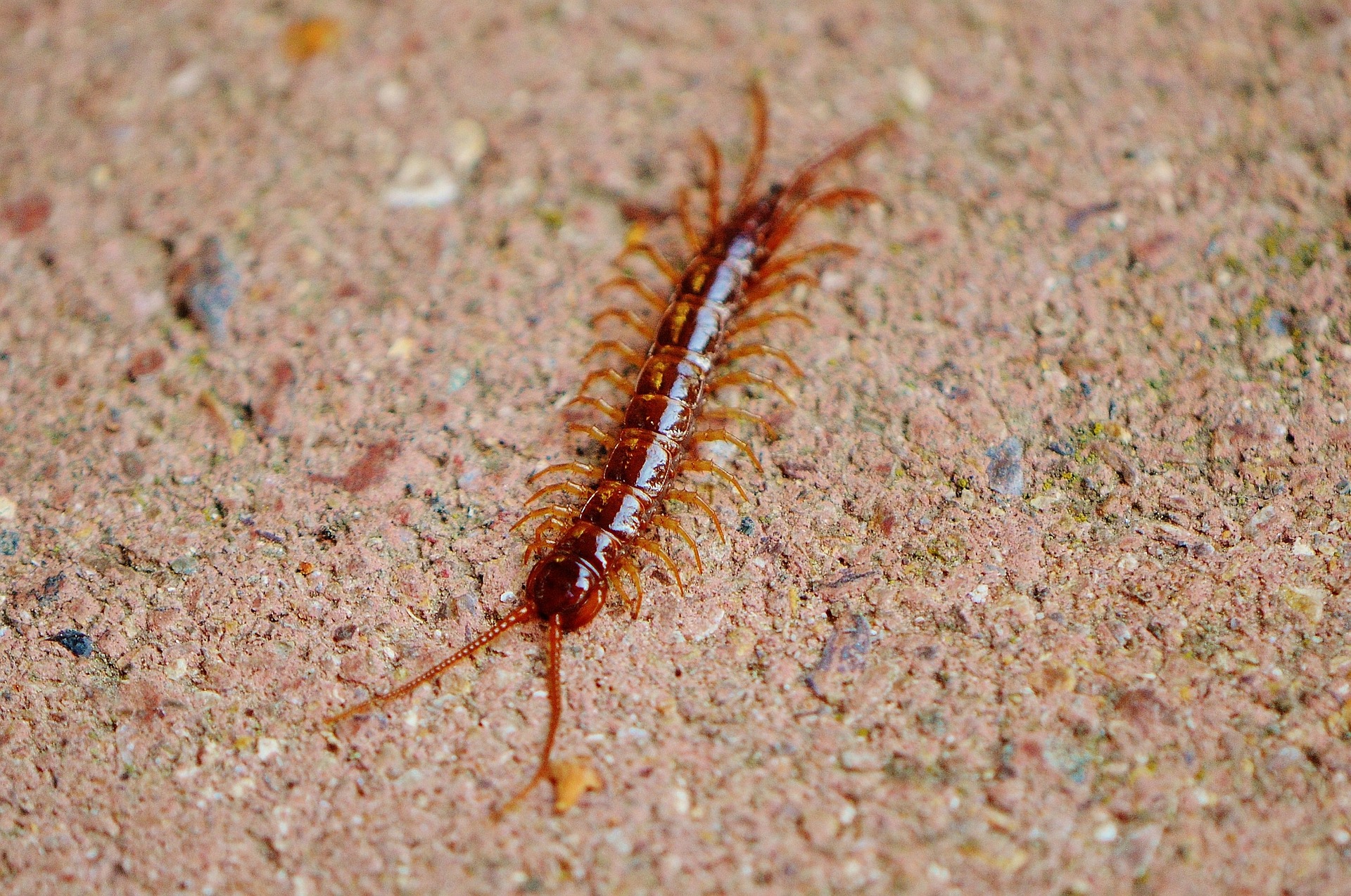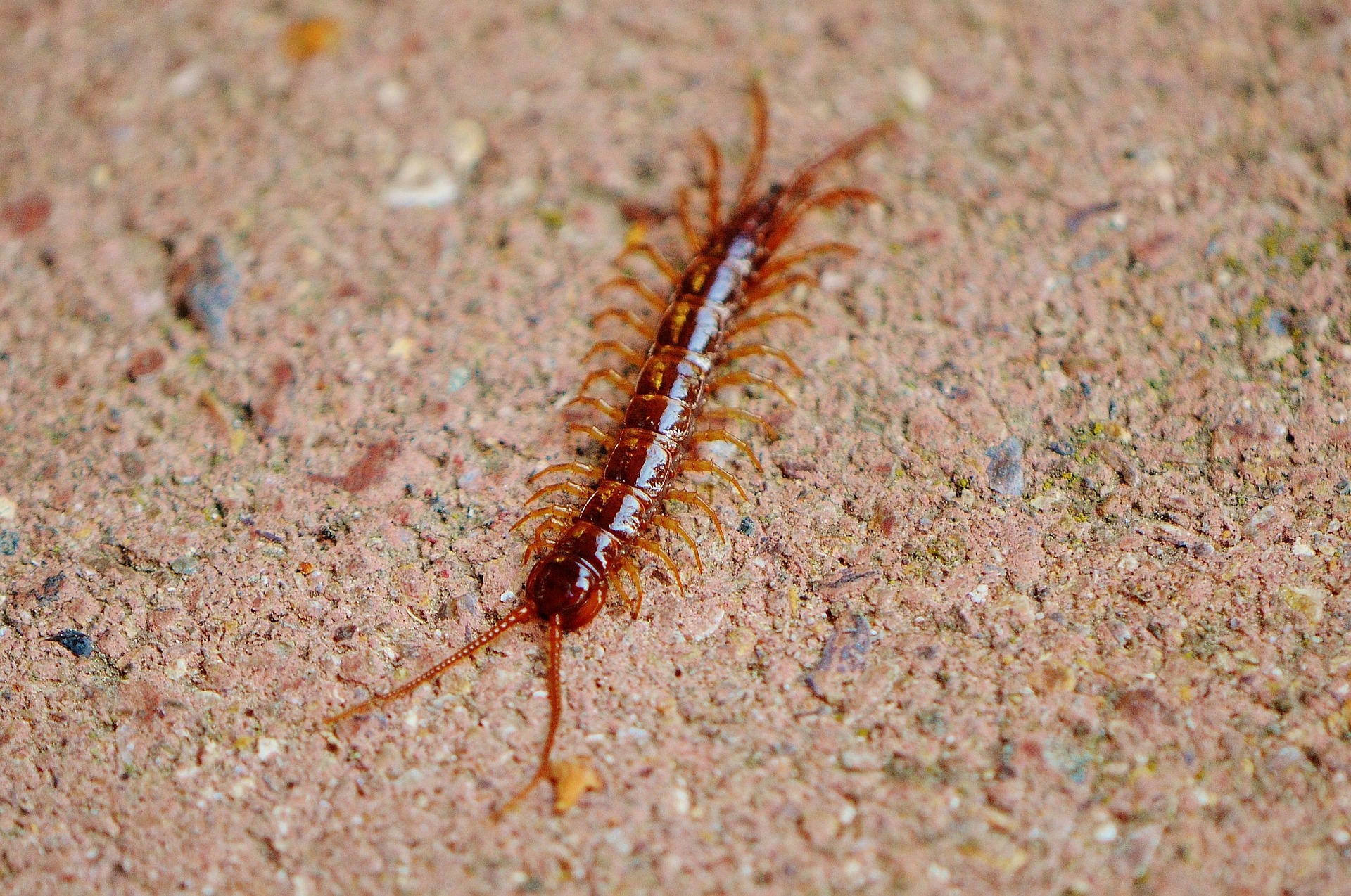Centipedes have elongated, flattened bodies with many legs. They are carnivorous and feed on small insects and invertebrates. They have venomous fangs that are used to kill their prey and feed mainly at night in dark, damp places.
Centipedes are not considered dangerous to humans, but their bite can cause swelling or itching. Although they are considered beneficial to have in gardens, centipedes in your home can be unwelcome guests.


